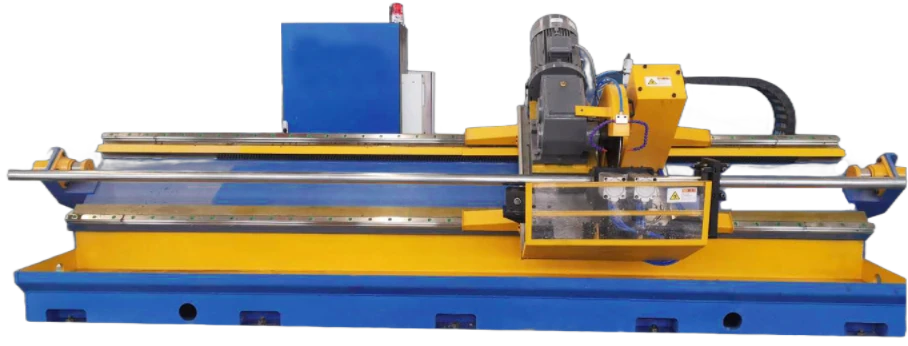Exploring the Mechanisms and Benefits of Rolling Shutter Patti Machines in Modern Manufacturing
Understanding the Rolling Shutter Patti Machine Revolutionizing the Manufacturing Industry
In the ever-evolving landscape of manufacturing technology, the rolling shutter patti machine has emerged as a vital piece of equipment, catering to the growing demand for high-quality, customizable rolling shutters. As urbanization continues to surge, the need for effective security solutions in commercial and residential properties has become paramount, leading to the increasing popularity of rolling shutters. This article delves into the significance of rolling shutter patti machines, their operational mechanisms, and how they are transforming the manufacturing industry.
What is a Rolling Shutter Patti Machine?
At its core, a rolling shutter patti machine is designed to produce the individual slats or “pattis” that make up a rolling shutter. These machines can manipulate various materials, including steel, aluminum, and even PVC, resulting in durable, resilient products tailored for diverse applications. The versatility of the rolling shutter patti machine makes it an essential tool for manufacturers aiming to meet specific client requirements while maintaining high efficiency.
Operational Mechanism
The operation of a rolling shutter patti machine is both fascinating and intricate. The process begins with the feeding of raw material, typically in coil form, into the machine. The machine features a series of rollers and dies, which shape the material into slats of predetermined dimensions. Key components of the machine include
1. Feeding System Ensures a consistent and precise flow of material into the machine. 2. Roll Forming Section A series of rollers gradually form the flat metal sheets into curved slats, offering structural strength and flexibility.
4. Final Inspection and Packaging After the slats are produced, they undergo a quality control process to ensure they meet industry standards before being packaged for delivery.
The automation and synchronization of these components make the rolling shutter patti machine highly efficient, minimizing waste and maximizing output.
rolling shutter patti machine

Benefits of Rolling Shutter Patti Machines
The integration of rolling shutter patti machines into production lines brings several benefits
1. Customization Manufacturers can easily adjust machine settings to produce slats of various lengths, widths, and materials, allowing for greater customization based on client needs.
2. Increased Productivity The automated nature of these machines drastically reduces production time, enabling manufacturers to fulfill larger orders with less labor input.
3. Cost-Effective By reducing manual labor and minimizing raw material waste, rolling shutter patti machines can significantly lower production costs.
4. Superior Quality Control The precise engineering of these machines ensures that each patti produced meets stringent quality standards, resulting in higher customer satisfaction.
5. Eco-Friendly Manufacturing Many modern machines are designed with energy efficiency in mind, further promoting sustainable practices in the manufacturing sector.
Conclusion
The rolling shutter patti machine represents a significant leap forward in manufacturing technology, offering a blend of efficiency, customization, and high-quality output. As the demand for rolling shutters continues to rise, the importance of these machines in the industry will only increase. Manufacturers who adopt this technology position themselves advantageously, meeting customer demands while enhancing operational efficiency. With ongoing innovations and improvements, rolling shutter patti machines will undoubtedly play a crucial role in shaping the future of manufacturing. As industries strive for greater automation and smarter solutions, embracing tools like the rolling shutter patti machine is key to remaining competitive in an increasingly fast-paced marketplace.
-
High Frequency Straight Seam Welded Pipe Production Line-BzZhou Xinghua Machinery Equipment Manufacturing Co., LTD.|line pipe steel&welded gas pipeNewsJul.30,2025
-
High Frequency Straight Seam Welded Pipe Production Line-BzZhou Xinghua Machinery Equipment Manufacturing Co., LTD.|High Precision&Automated SolutionsNewsJul.30,2025
-
High Frequency Straight Seam Welded Pipe Production Line - BzZhou Xinghua Machinery Equipment Manufacturing Co., Ltd.NewsJul.30,2025
-
High Frequency Straight Seam Welded Pipe Production Line-BzZhou Xinghua Machinery Equipment Manufacturing Co., LTD.|Precision Welding, High EfficiencyNewsJul.30,2025
-
High Frequency Straight Seam Welded Pipe Production Line|BzZhou Xinghua|Precision Welding&EfficiencyNewsJul.30,2025
-
High Frequency Straight Seam Welded Pipe Production Line - BzZhou Xinghua|Precision Engineering&EfficiencyNewsJul.30,2025


